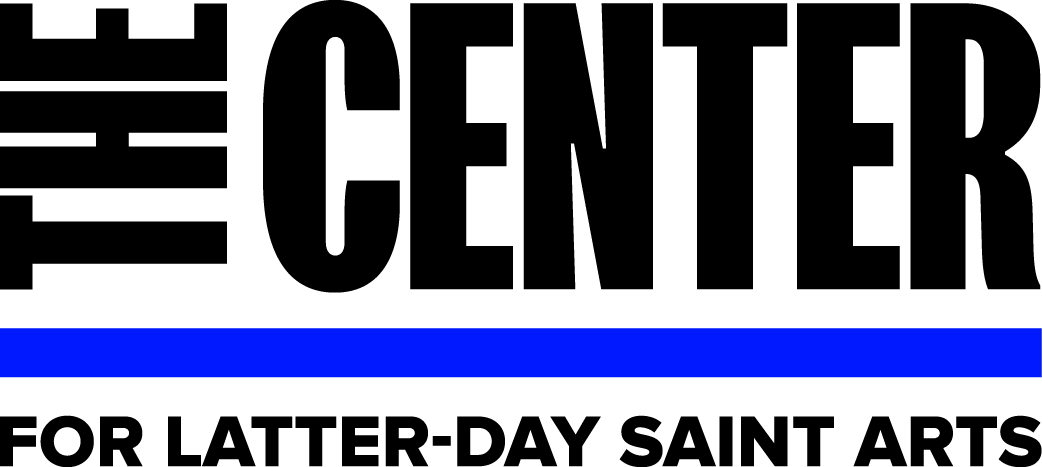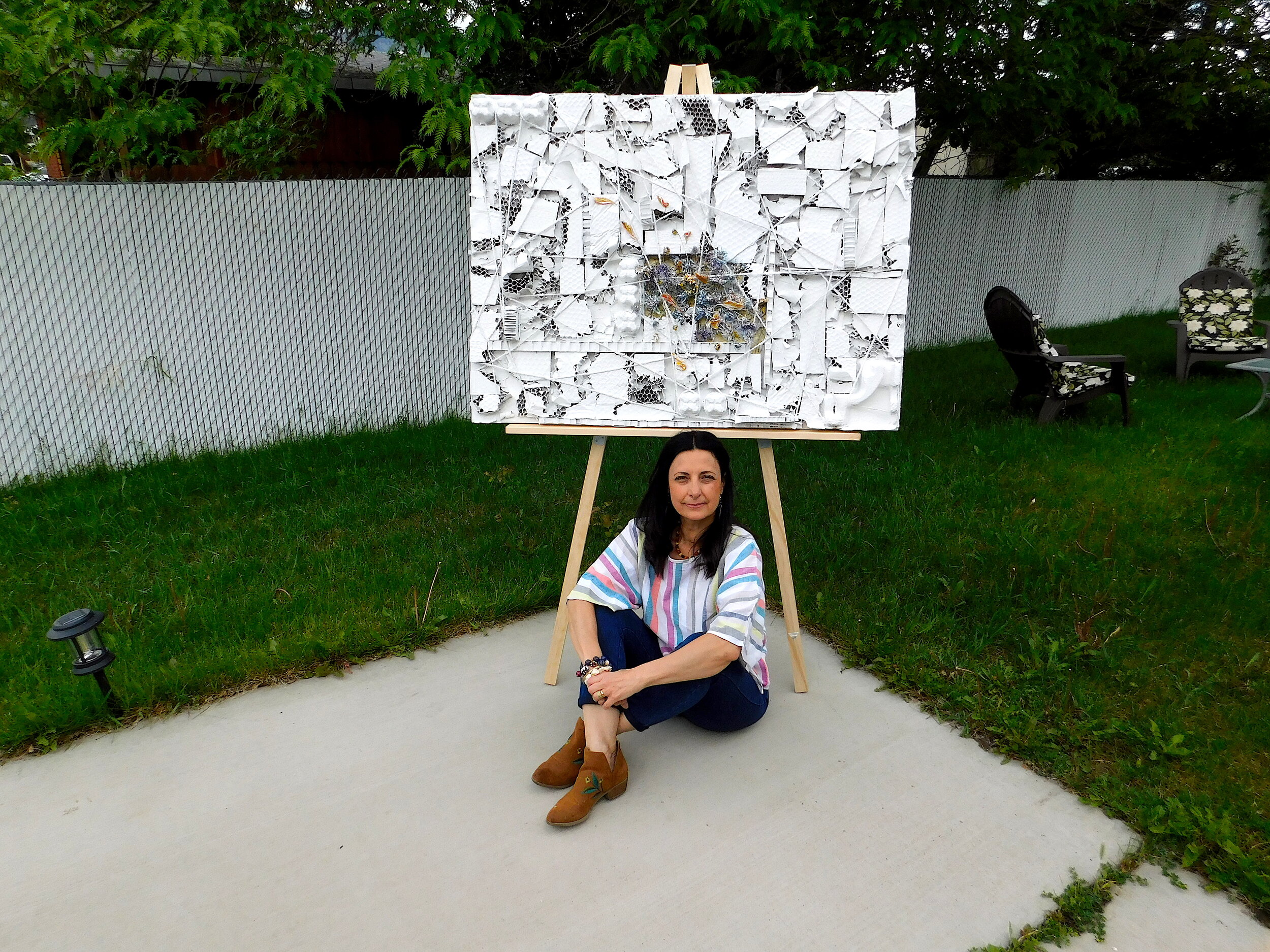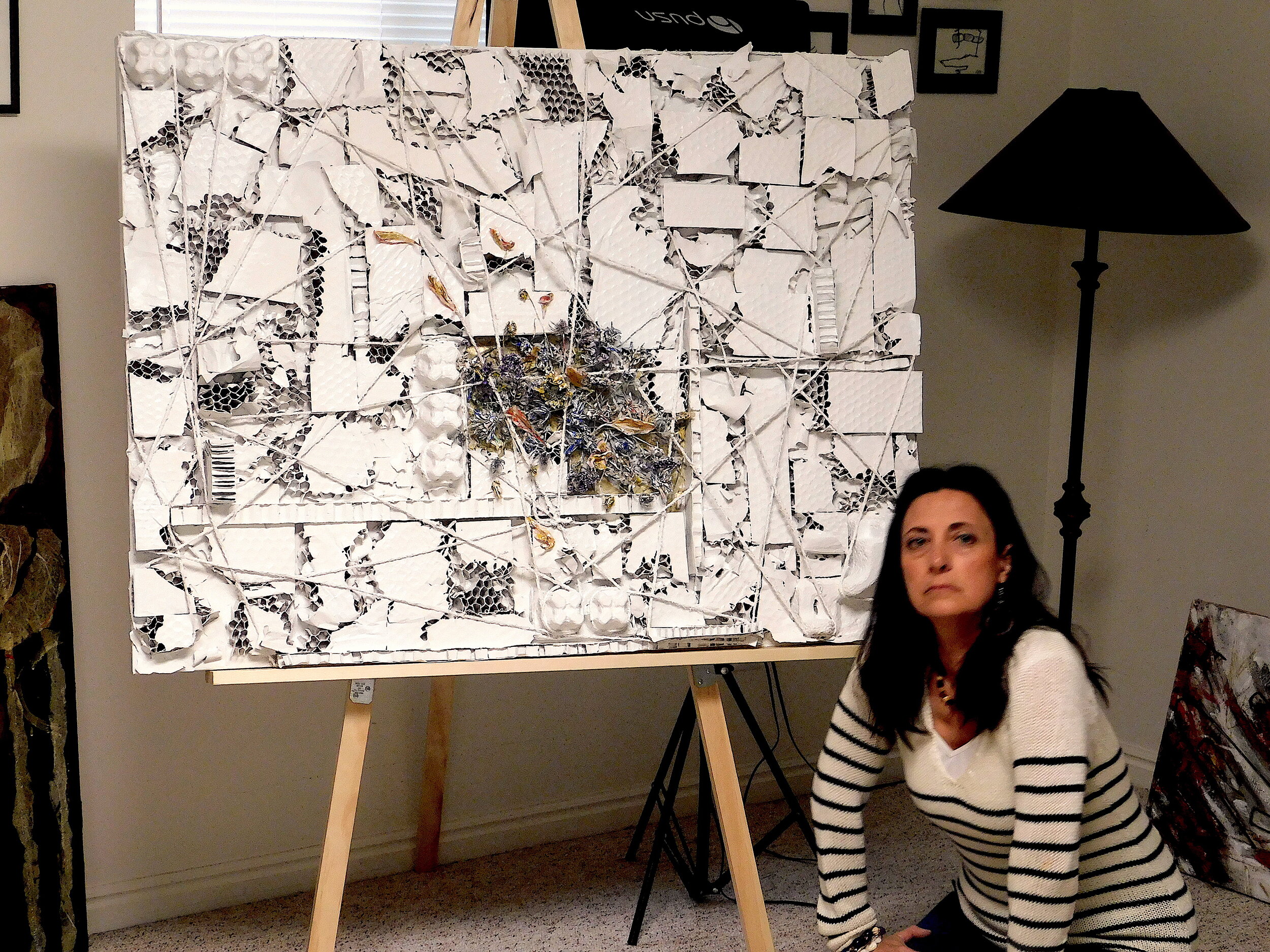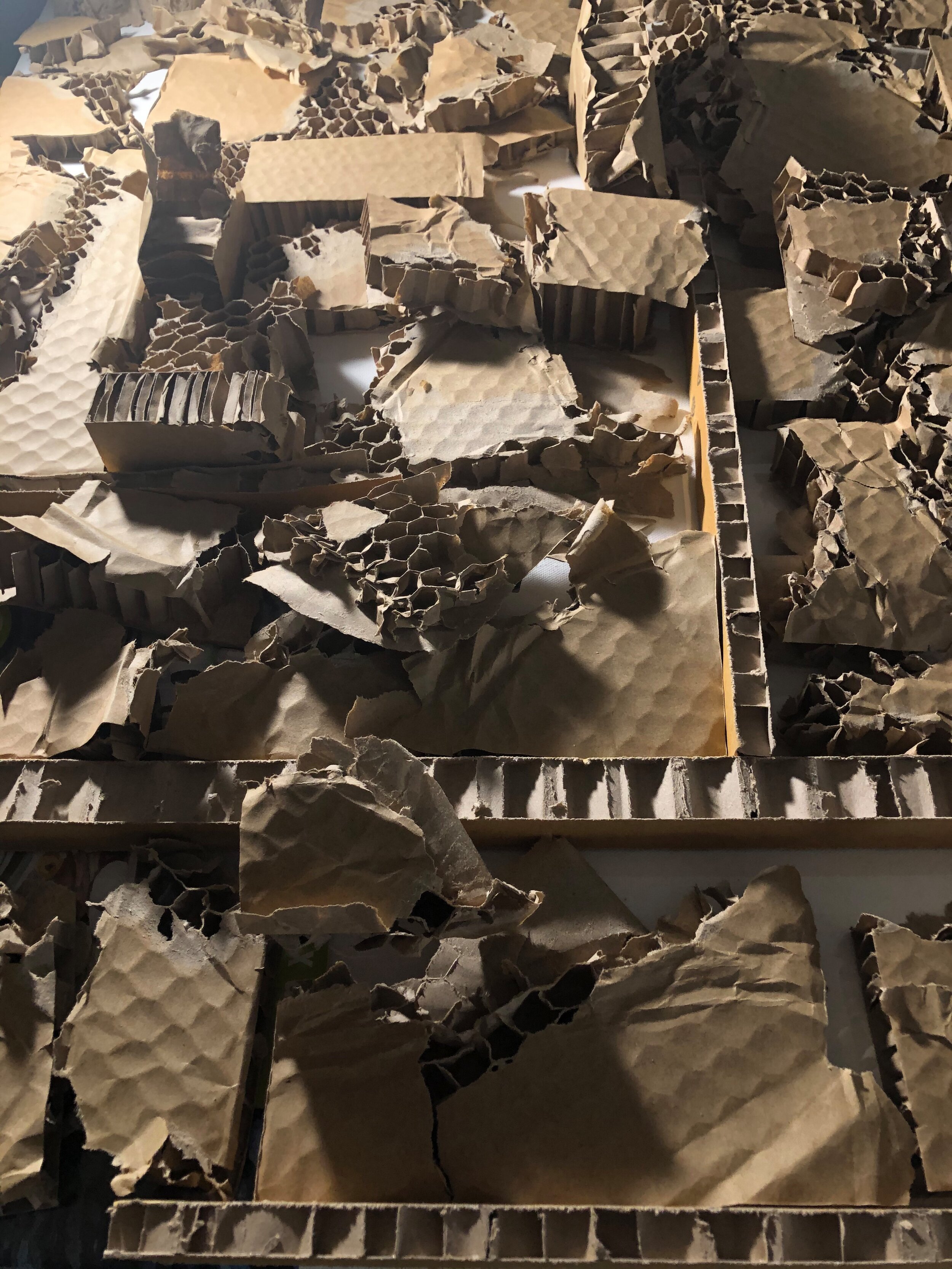Lockdown, a Meditation on the 2020 Pandemic
Paola Bidinelli
mixed media
Use of abandoned and waste materials that have “reached the end of their existence to become something totally new”
Made possible by a grant from the Center for Latter-day Saint Arts
A few months ago, in a hospital in italy…
To my father
As part of my nearly decade-long journey researching themes of Identity and Time, this unforeseen and completely autobiographical work is born from the desire to give body and voice to a personal pain that has recently struck my family. A few months ago, in a hospital in Italy, in the initial phase of the pandemic outbreak, my father died, victim, as so many—too many—are, of an emergency situation that eluded control. This unexpected and devastating event infiltrated my daily thoughts, bringing moments of great emotional conflict, and many questions. The desire to stop the pain by tapping into my affectionate memories as a secure repository of joy compelled within me an irrepressible need to keep my father's identity, swept away in only a few hours, alive. This work began to slowly construct itself. My mind had begun to produce continuous images in the attempt to make sense of what was happening and, with the evolving state of world emergency, the images became obsessive. Day after day, I became aware that the pandemic was breaking down the lives of millions of people. And while the spring bloomed, as ever, outside the doors of the homes, it seemed that no one possessed the right any longer to breathe in the sun. A new abnormality, made of geometric distances and automatic gestures took up residence in everyone’s lives. The cities became ever more empty and unfulfilled. The space-time elongated and swallowed the seconds, minutes, hours, and days of each person. A surreal landscape emerged spontaneously upon the horizon of my awareness. It was there, ready, like a vision to immortalize. A landscape that had no right to contain anyone, while nature, with its innocent necessity, continued to explode, reminding me that, in contrast to man, she has no need of permission to continue to live. This work comes to the world with an initially loud cry, and progressively, during the long hours dedicated to work, it recomposes itself in a sanctuary of silence, full of sacredness, as if before a sacrificial altar.
Lockdown shows the image of a city crystallized in isolation, in a surreal stasis, that becomes a metaphor for the chaotic malfeasance of spaces, times, and the identity of every person, and where the absence of liberty robs people of the ability to breathe. Choice and use, like customizations of my creative process, of scrap materials, in this case, the insides of cardboard boxes and worn-out ropes, lent themselves perfectly to sharpen the sense of a general boxing-up, a physical and emotional binding of people. The massive use of white spread all over like a curtain of death intensifies the sense of immobility and mourning. At the center of the work, the presence of a square of pulsating nature created a clean contrast with the image of a phantom city. The flowers, recycled materials constantly present in my works, here became elements used purposefully for their symbolic and commemorative value.
But even in its tragic dimension, this work longs to bring a renewed message of hope. Despite the fact that the word uncertainty today arises spontaneously on the lips of humanity, the word transformation is actually the one that is urgently needed to be put into action, because it represents our future. This means transforming our forced solitude into an expanded space-time that is all ours, in which to gather thoughts, memories, and values. To know the greater “I” that comes before us and defines our true identity, despite every effort to diminish its beauty. To understand that consciousness is the living spirit that animates the world. To jump with both feet and without hesitation into the wonder of creation that allows imagination and the birth of art, our most precious resources for never stopping growing. Rediscover beauty in truer relationships, slower and more dedicated, expressed with new words, words spoken while looking in the eyes of the other, that are not afraid of contagion, but that become contagious with love and life. Words that touch the heart and penetrate deeply, that harmonize us with nature so that she no longer shirks man because he doesn’t understand her. The isolated “I”, but rediscovered in a larger dimension of time and identity, will not allow itself to be immobilized by the fear of an untouchable future, because the future, if we want, can happen right now together with us. The future is nurtured by the idea of time understood not as a limit, but as ALWAYS, where life stays alive even after it dies. When one seeks this harmony, time opens beyond every limit, where one even grasps what was never before spoken. Life, in her true dimension of Identity and Time, is a masterpiece that is born out of small actions that contain the knowledge of eternal archetypes. —Paola Bidinelli, mixed media artist, 2020
Paola Bidinelli
is an Italian artist who started cultivating her artistic interests during school. She graduated with a Masters in Art Analysis from the Gabriele d’ Annunzio University in Italy. Since 1990, she has taken part in exhibitions where she drew the immediate interest of critics. A growing appreciation and significant presence of her works is seen in international events, in publications, and critical catalogs edited by scholars of art. Her work is rooted in the practice of abstraction and investigation of mixed media techniques and themes related to the perceptions of identity and time. Paola uses these themes as vehicles to embody spiritual experience. After moving to the United States in 2015, she founded the Bianco Avant-garde movement and Performing Arts Center, a public art space located in Orem, Utah. The center's main focus is engaging arts and creating a collaborative, interactive and stimulating environment where people can experience art as a powerful educational tool and as a cultural force.
You can find out more about Bidinelli and the Bianco Avant-garde Center here.



